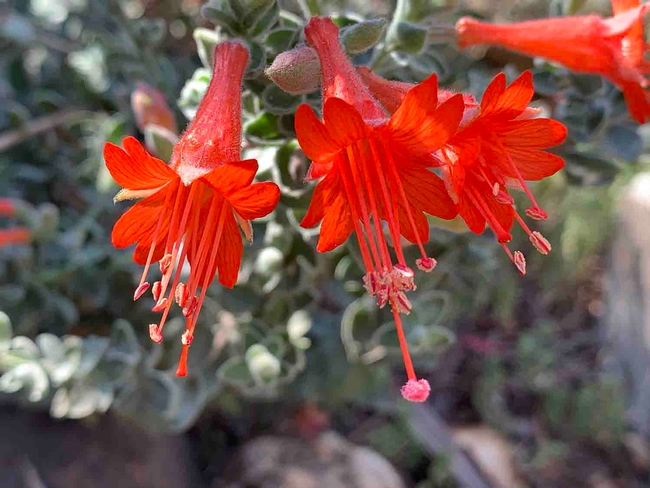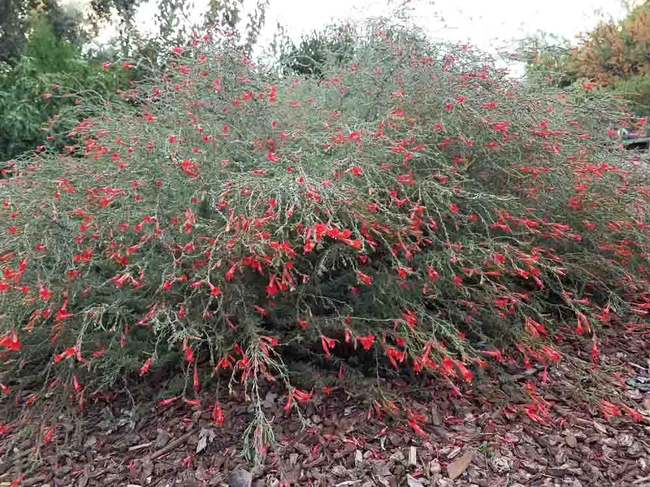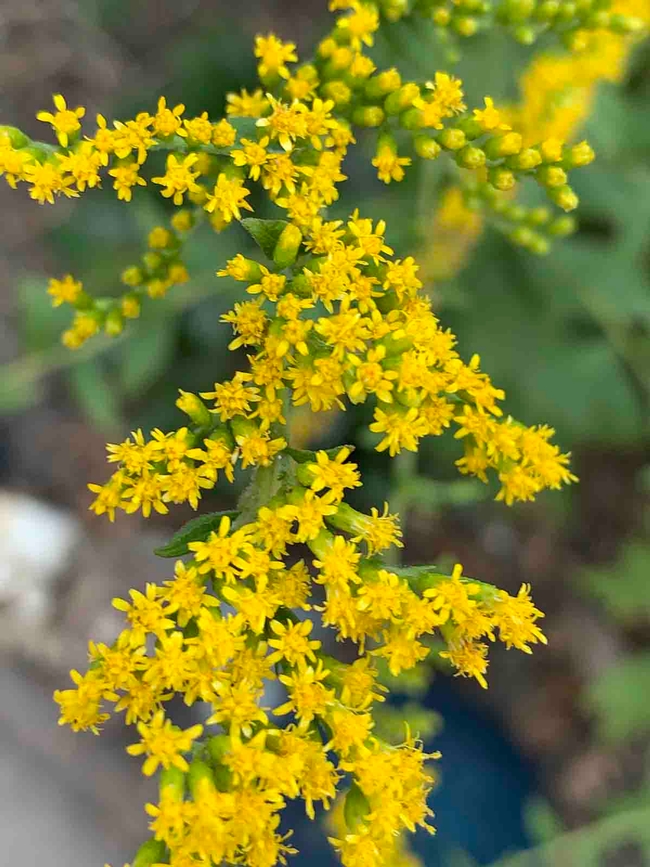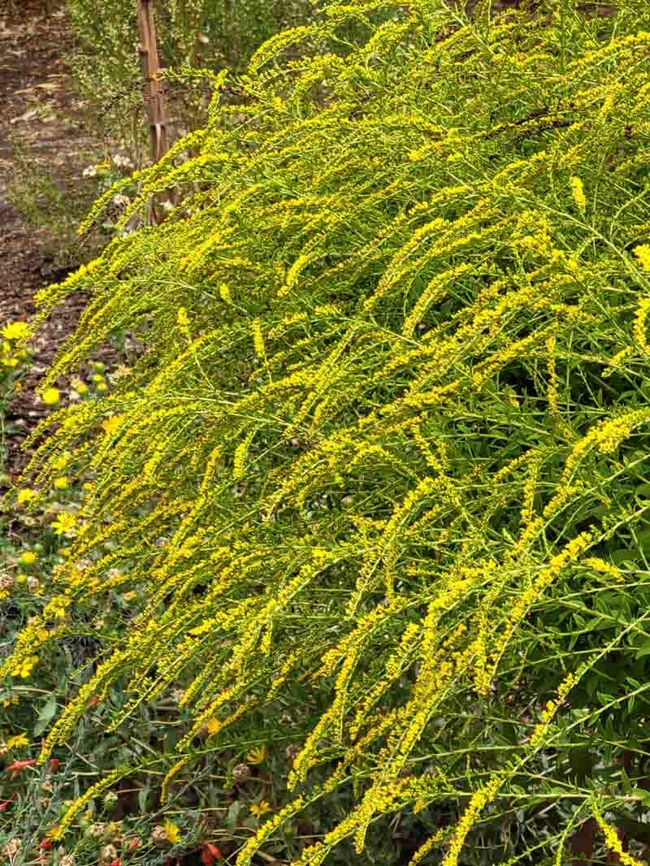By fall most summer-blooming plants have run their course, while summer-dormant plants are just beginning to start their new growth for the season. You may feel your garden needs more color. Luckily for the gardener, there are some native plants which continue to bloom well into the fall and others which begin to bloom in late fall.
California fuchsia flowers, Laura Kling
California fuchsia large shrub, Jeanette Alosi
California goldenrod flowers, Laura Kling
Fall is the best time to plant natives as they have time to get their roots established before the heat of next summer. If you plant some fall-bloomers now, you'll have some great color at this time next year.
California goldenrod, Fireworks, Jeanette Alosi



